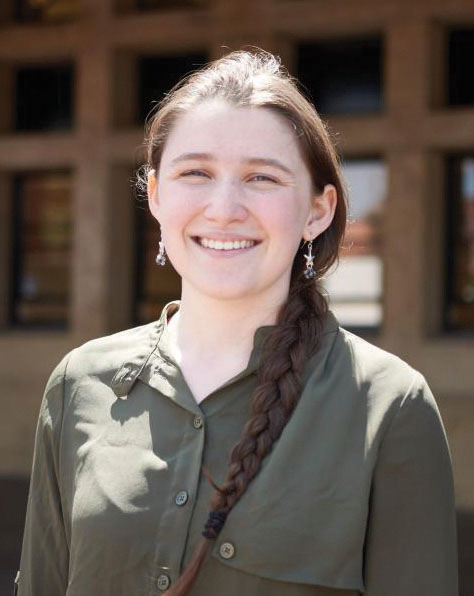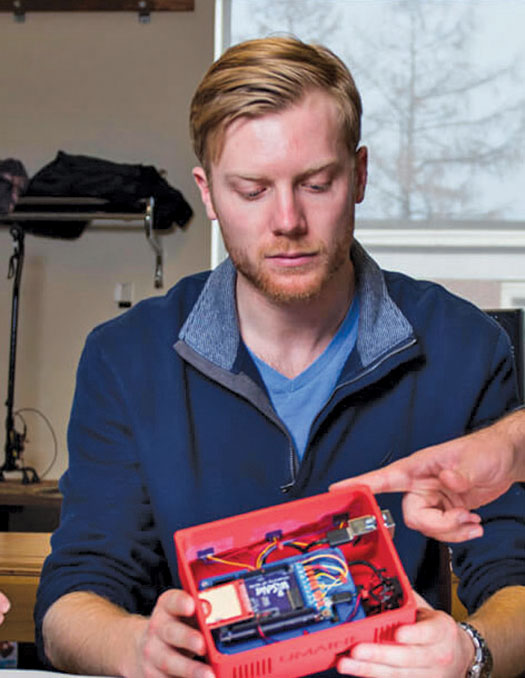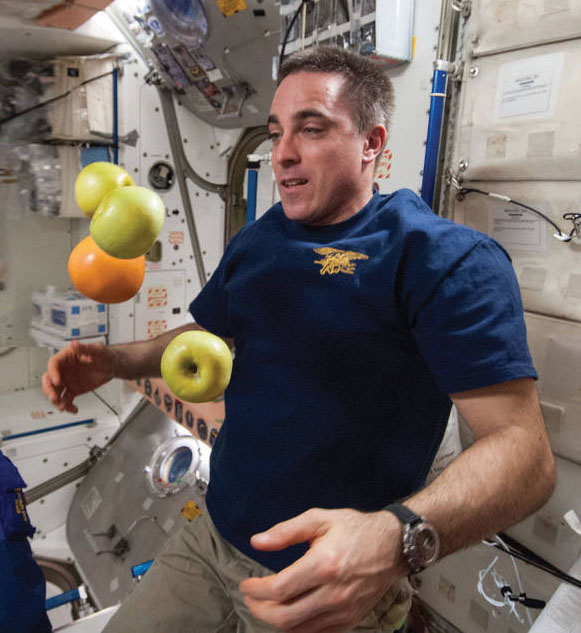NATIONAL ENGINEERING WEEK was established to bring more young people into STEM fields, from elementary school to high school students, and to expand general knowledge of the ever- growing fields of study.

Admittedly, the hands-on demonstrations at EWeek expos are the highlight of the show and while there is no replacement in the virtual world, the ability to gather even more people online has ever-problem-solving engineers looking on the bright side.
“Tech has given us a lot of flexibility in the pandemic,” said Brian Conroy, president of the Maine Engineering Promotional Council, which organizes the state’s Engineering Week activities. Conroy is also the Manager of Distribution Planning at RLC Engineering.
Although the Engineering Week Expo has moved between the University of Southern Maine’s Gorham campus and University of Maine at Orono each year, there were students across the state who would always be left out by the long transportation times. Getting the event online this year has helped the MEPC see how they can keep the EWeek Expo more accessible moving forward. As one might expect from math and science experts, this year’s virtual expo will be a little more dynamic than the Zoom grid we may be used to.
Using a platform called VFairs, the organizing team was able to customize a virtual space that is more in line with a video game experience. The expo “building” will look as close as they can get it to the Ferland Engineering Education and Design Center, which is under construction at UMaine Orono.
When complete, the real Ferland Center will house the Biomedical Engineering Program and Department of Mechanical Engineering, as well as teaching laboratories for the Mechanical Engineering Technology Program. It will also provide space for all UMaine engineering majors to complete their senior capstone projects and collaborative learning classrooms that will serve the entire campus.
Once attendees enter the space, there will be exhibitors at “booths” conducting live demonstrations via web broadcast.
Mainers of all backgrounds might be interested in listening to the powerhouse line-up of speakers at the event that demonstrate the far-reaching power of a STEM education in Maine.
Keynote speaker Paige Brown is a graduate of Bangor High School and the cofounder and CEO of WindBorne Systems, a weather forecasting company. WindBorne’s proprietary balloon systems fly longer than conventional ones, letting them collect unique data and better predict the increasingly extreme weather that climate change will bring.
While in high school, Brown researched pollution levels in Bangor area waterways. After discovering phosphate pollution, she developed a material capable of absorbing the pollutant from her streams. She presented her findings at the Intel Science Talent Search and International Science Fair.
After numerous awards for her work, she studied Materials Science at Stanford before being selected as a 2019 Thiel Fellow. She is currently working full time on WindBorne to continue her efforts in the fight against climate change.
Special guest speaker Casey Clark is a ground segment engineer for SpaceX, the private, space tourism company. Clark, who is from Old Town, was awarded an internship with the company while a student in the electrical and computer engineering program at the University of Maine Orono.
In 2016, while earning his master’s at UMaine, Clark worked under Dr. Ali Abedi to deliver the university’s first NASA payload—a wireless air leak uses ultrasonic wave sensors to detect and pinpoint the exact location of micro air leaks in the International Space Station.
Astronaut Christopher Cassidy will be a special guest speaker. A graduate of York High School, Cassidy was selected as an astronaut by NASA in 2004. He has completed ten spacewalks, and is a veteran of three space flights, STS-12, Expedition 35 and Expedition 63, where he spent time on the International Space Station with another Maine-native astronaut, Jessica Meir.
Cassidy, a U.S. Navy SEAL, has been deployed twice to the Mediterranean and twice to Afghanistan. While in the military, he accumulated more than 200 hours underwater as pilot/navigator/mission commander of a two-man flooded submersible SDV, which is launched and recovered from a host-ship submarine.
Cassidy holds a Bachelor of Science in Mathematics from the U.S. Naval Academy, a Master of Science in Ocean Engineering from the Massachusetts Institute of Technology and an honorary Ph.D. from Husson University.
 Copy the Story Link
Copy the Story Link
Comments are not available on this story.
Send questions/comments to the editors.




